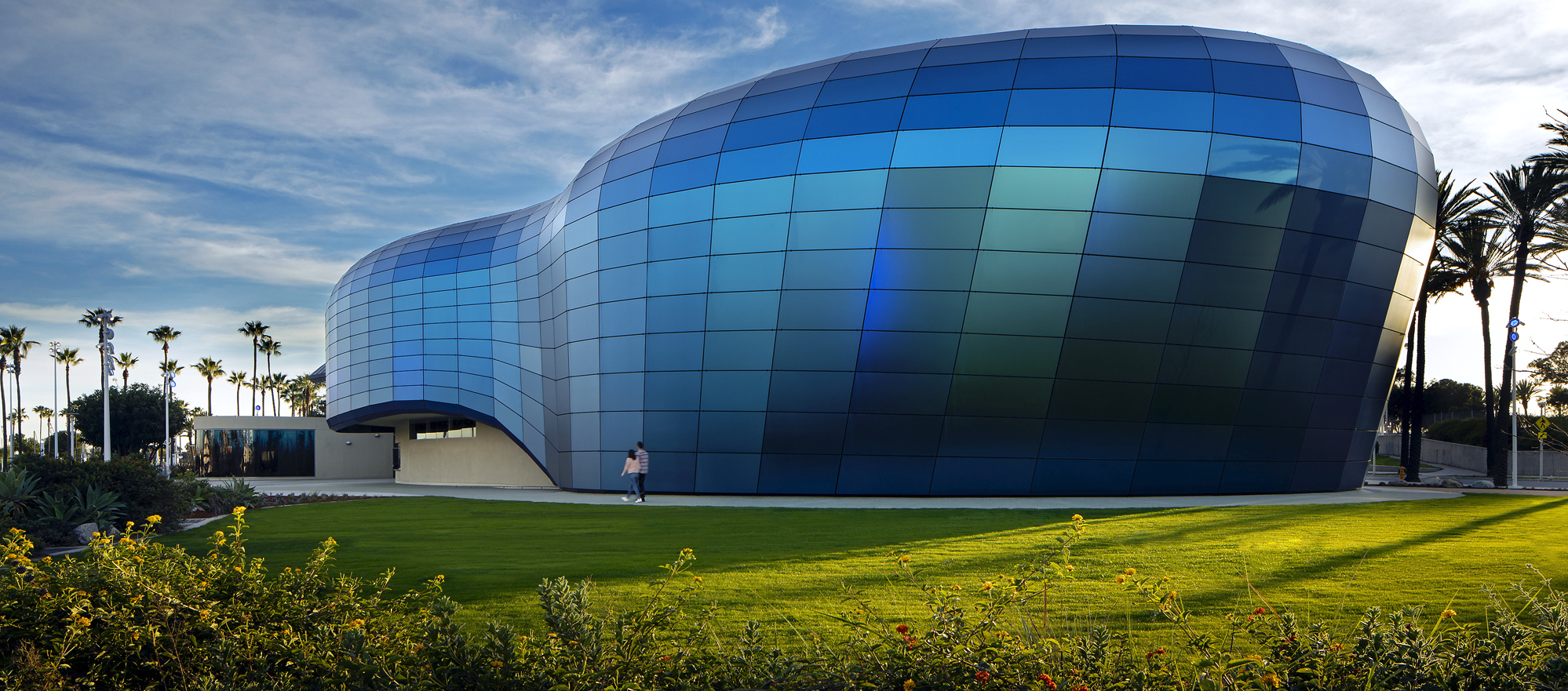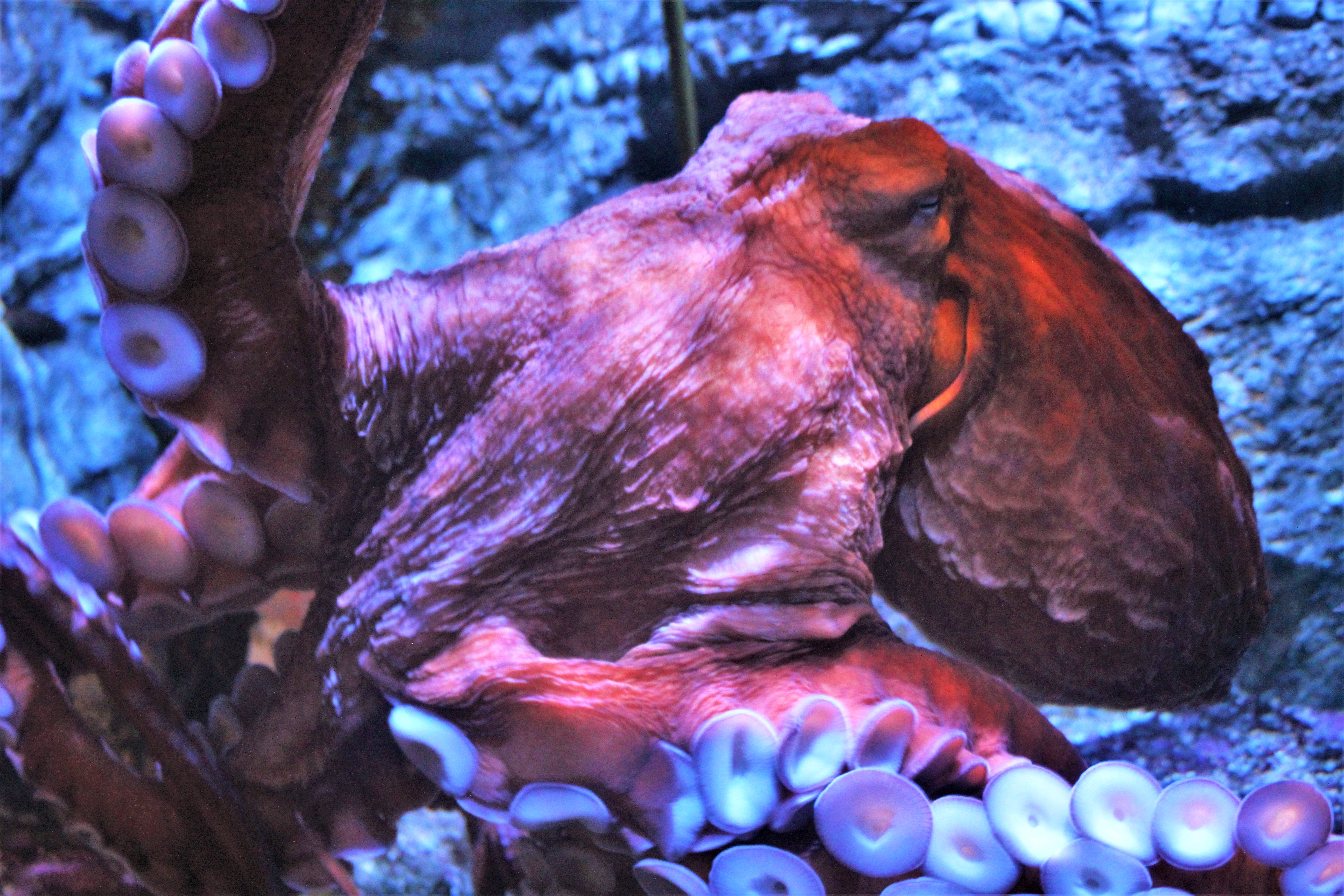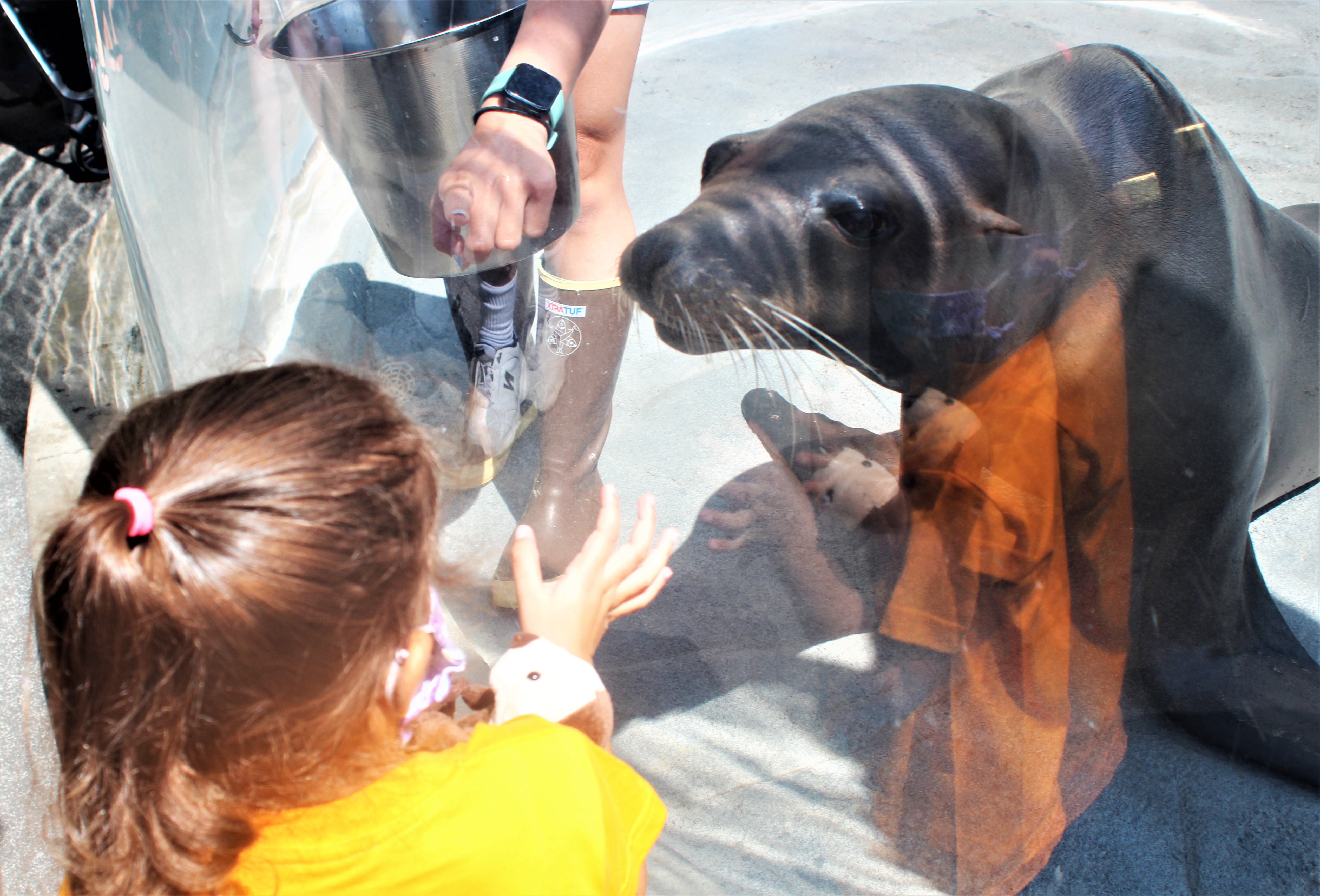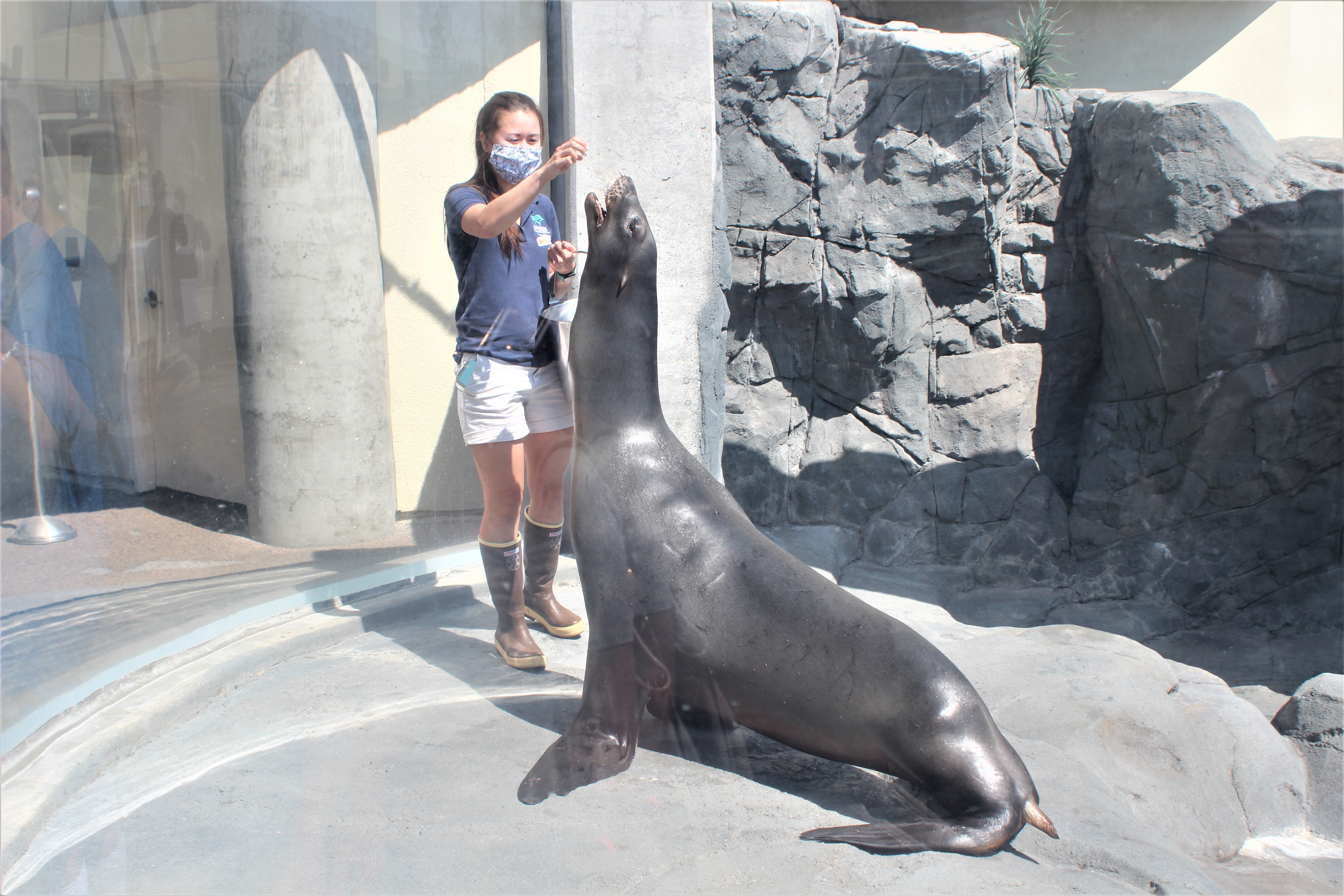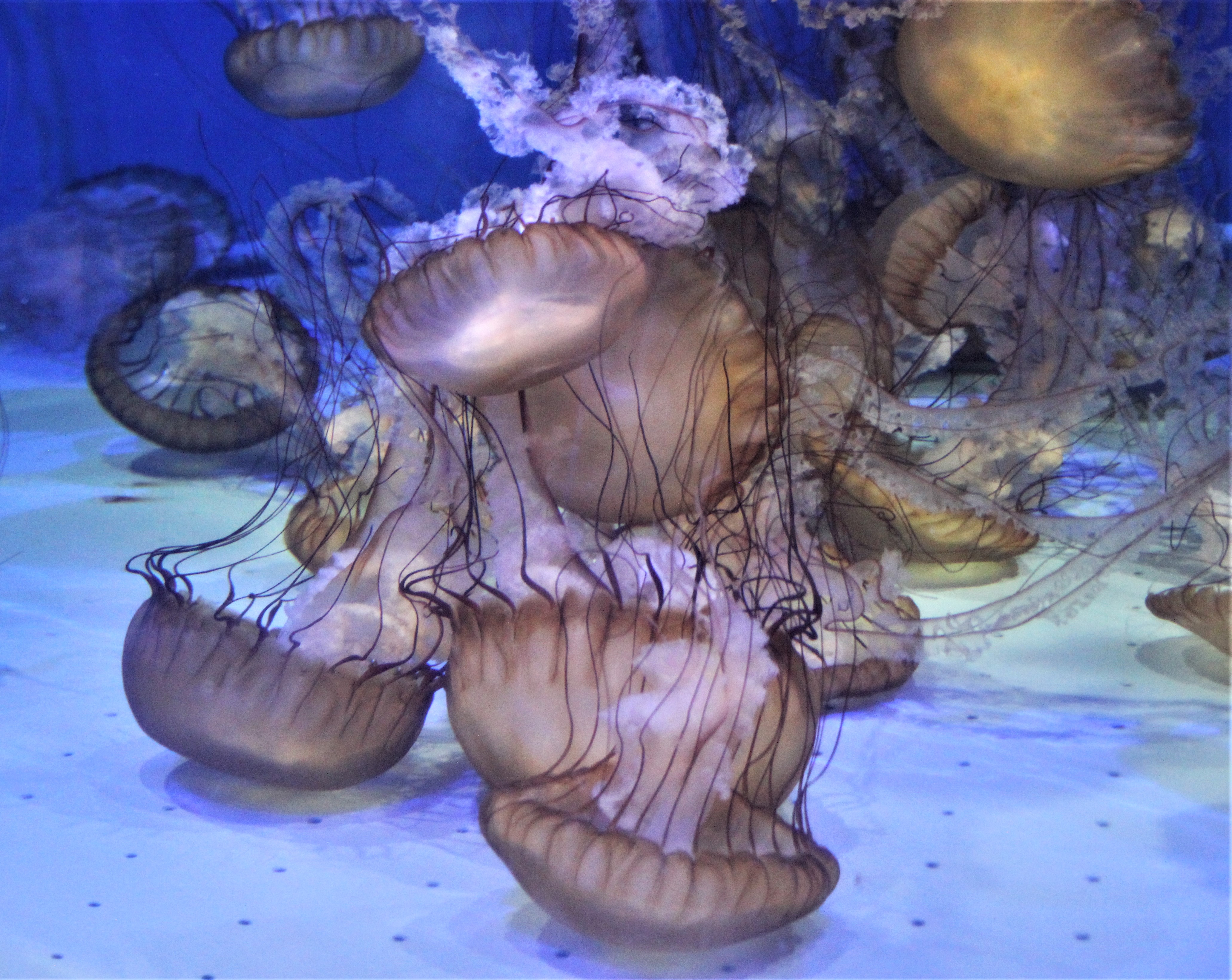(Photograph of Pacific Visions by ©2019 Tom Bonner)
Dr. Peter Kareiva, Aquarium of the Pacific’s (AOP) new President and CEO, realized that his job would include some unprecedented conditions when he began the interview process during the first months of the COVID-19 pandemic. “There were four rounds of interviews, all on Zoom. That was challenging,” said Kareiva, whose wealth of oceanic experience includes multiple degrees in various life sciences fields as well as years of research and conservation efforts related to oceans across the globe.
Kareiva comes to AOP after serving as Director of the Institute of the Environment and Sustainability at UCLA. Before that, he was Chief Scientist and Vice President of the Nature Conservancy, where he oversaw a staff of 600 who worked on conservation science in 36 countries. He succeeds Dr. Jerry Schubel, who served as President & CEO of the Aquarium for 18 years.
“I was overjoyed to get the job in part because there’s some sense of normalcy here at the Aquarium,” said Kareiva. “That’s a good thing. It shows that we can be COVID-safe and still enjoy good things.”
Kareiva, who loves working near the coast, is enjoying the change of scene. “At a university, one engages with students, faculty, and philanthropists,” he said. “Here at the Aquarium, we engage the whole world.”
One of Kareiva’s main goals at AOP is to increase awareness of how food and energy systems work. “People have the luxury of not thinking about these things,” he said. “If we can activate peoples’ thinking, change individual behavior and be a positive influence on environment-related business practices and government policy, we can truly influence the health and integrity of these systems.”
Due to public health guidelines, the Aquarium was closed to the public from March 14 through June 14. On July 3, the indoor spaces closed again on orders from Governor Newsom. Outdoor exhibitions such as the Sea Lion Habitat, Shark Lagoon, and the Lorakeet Aviary remain open, with safety protocols in place.
One can still get a great look at the Aquarium’s assortment of indoor habitats like the penguin habitat and creature-filled coral reef exhibition via a series of live webcams. All of the 12,000 animals who dwelled at the Aquarium before the pandemic are still there, cared for by Aquarium staff and a dedicated group of volunteer divers.
“When the pandemic hit, we rearranged our staff to assure that the things we were doing were safe for the staff and the animals, but the actual care of the animals hasn’t changed a lot,” said Brett Long, AOP’s Curator of Mammals and Birds. “They require us to be on site seven days a week, all year round.”
AOP, always a strong presence with in-person engagement at various community events throughout the city in pre-pandemic times, remains connected by providing online educational content via partnerships with several local school districts. AOP also offers free programming for the community five mornings a week – including one program in Spanish – via the Aquarium Online Academy, AOP’s multi-faceted virtual learning center. Still, the Aquarium staff misses the person-to-person outreach, said Emily Yam, AOP’s Senior Manager of Education. “We are looking forward to going back out to the communities of Long Beach, asking people what they love about Long Beach and its relationship to the Pacific Ocean, and why they would want to protect that,” she said. “To know that the Aquarium cares really resonates with people.”
Kareiva and the rest of the AOP staff are eager to re-introduce the public to its diverse menagerie – including Kareiva’s personal favorite, Godzilla, the Giant Pacific Octopus – as well as the latest addition to the Aquarium, the dazzling Pacific Visions wing. Although temporarily closed, in the future visitors who enter Pacific Visions will first experience two huge galleries featuring a multi-channel video installation, a virtual waterfall, and new live animal exhibits.
After touring the galleries, visitors will enter a state-of-the-art immersive movie theater with a 120-foot curved screen, floor projections, sensory enhancement, and seating for all mobilities. Films shown here emphasize the connection between humanity and the ocean.
After experiencing the theater, visitors move into a culmination gallery filled with animal exhibitions and several interactive stations designed to enlighten visitors about climate science, food source awareness and other pressing global issues.
“Pacific Visions is all about interactive immersion experience, drawing regular people into a conversation of what our future should be,” said Kareiva.
While Kareiva looks forward to the day the public has access to the entire AOP, he encourages visitors to stop by and enjoy the outdoor exhibits that remain open. “You’re not going to find a more educational and entertaining place that will make you feel totally safe and part of a community,” Kareiva said. “The Aquarium can thrive through these times, and the experience for visitors can be better than ever.”


